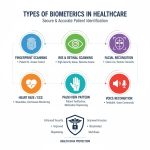The Rising Tide of Biofertilizers: Market Trends, Challenges, and Opportunities
The global biofertilizers market stands at a pivotal juncture in its evolution, demonstrating remarkable growth potential that positions it as one of the most promising segments within the agricultural inputs sector. According to comprehensive analysis by Vantage Market Research, the Global Biofertilizers Market reached a valuation of USD 2649.23 million in 2022, with projections indicating an expansion to USD 6017.81 million by 2030. This trajectory represents a compound annual growth rate (CAGR) of 10.80% over the forecast period, slightly higher than previous industry estimates of 10.9%. This robust growth pattern reflects the fundamental shift occurring within agricultural practices worldwide, as farmers increasingly transition from conventional chemical-intensive methods toward more sustainable and environmentally responsible approaches.
The acceleration in market value can be attributed to a convergence of multiple factors, creating a perfect storm for biofertilizer adoption. Primary among these is the growing recognition of soil health as a cornerstone of agricultural sustainability. Decades of intensive chemical fertilizer use have resulted in widespread soil degradation, reduced microbial activity, and diminished natural fertility across global agricultural lands. Biofertilizers, with their ability to restore beneficial soil microorganisms, improve nutrient cycling, and enhance soil structure, offer a compelling solution to these persistent challenges. The economic implications of this transition are substantial, with biofertilizers demonstrating potential for reducing input costs while maintaining or improving yields through enhanced nutrient use efficiency.
Environmental considerations also feature prominently in the market’s expansion narrative. Conventional fertilizers, particularly nitrogen-based products, contribute significantly to agricultural greenhouse gas emissions and water pollution through runoff and leaching. As climate change concerns intensify and environmental regulations tighten, biofertilizers present an attractive alternative with substantially reduced environmental footprints. The carbon sequestration potential of improved soil biology further enhances their appeal in carbon-conscious agricultural systems. This environmental advantage is increasingly translated into market premiums for products grown with biological inputs, creating economic incentives that reinforce adoption trends.
The investment landscape surrounding biofertilizers has likewise evolved dramatically, with venture capital and corporate investment flowing into biological agricultural inputs at unprecedented rates. Major agrochemical companies have recognized the strategic importance of biological products in their portfolios, driving acquisitions, research investments, and product development. This influx of capital has accelerated innovation cycles, leading to more effective formulations, improved shelf stability, and enhanced field performance – addressing historical limitations that previously constrained market growth. The involvement of established agricultural input companies has also expanded distribution networks and technical support systems, making biofertilizers more accessible to conventional farmers beyond the organic niche.
Regulatory frameworks across major agricultural markets have increasingly recognized and accommodated biological products, streamlining registration processes and creating more favorable conditions for market entry. In some regions, particularly in Europe and parts of Asia, direct subsidies and incentive programs explicitly promote biofertilizer adoption as part of broader sustainable agriculture initiatives. These policy supports, combined with growing consumer demand for sustainably produced food, create powerful market pull factors that complement technological advancements on the supply side. As these trends continue to converge and reinforce one another, the biofertilizer market appears positioned for sustained growth well beyond the current forecast period, potentially reshaping agricultural input paradigms on a global scale.
Key Takeaways
- The global biofertilizers market is projected to grow from USD 2.65 billion in 2022 to USD 6.02 billion by 2030, representing a robust CAGR of 10.8%.
- Sustainable agriculture adoption, soil health concerns, and environmental regulations are primary drivers accelerating biofertilizer market growth.
- Limited shelf life, contamination risks, and competition from entrenched synthetic fertilizers remain significant market constraints.
- Nitrogen-fixing biofertilizers dominate the market (65% share), with phosphate-solubilizing and potassium-mobilizing formulations gaining traction.
- Seed treatment has emerged as the preferred application method due to its efficiency and effectiveness in establishing early microbial colonization.
- North America leads market adoption, while Asia Pacific shows the fastest growth rates due to government initiatives and smallholder farming transitions.
- Major players include Novozymes, UPL Limited, Lallemand Plant Care, and emerging companies from India specializing in tropical agriculture solutions.
- Strategic partnerships between agrochemical companies, startups, and research institutions are reshaping the competitive landscape.
- Integration with precision agriculture technology is enhancing biofertilizer performance consistency and addressing historical variability challenges.
- Biotechnology innovations, including advanced microbial screening and improved formulation science, are dramatically improving product efficacy.
- Regenerative agriculture frameworks and carbon markets are creating additional economic incentives for biofertilizer adoption.
- Growing consumer demand for pesticide-free products is creating market pull throughout agricultural supply chains.
- Farmer education initiatives and peer-to-peer knowledge networks have become crucial for overcoming adoption barriers.
- Non-traditional markets including cannabis cultivation, urban agriculture, and turfgrass management present significant growth opportunities.
- The convergence of multiple technologies—biotechnology, nanotechnology, and digital agriculture—is driving the next generation of biofertilizer innovation.
Key Drivers of Market Growth
The remarkable expansion trajectory of the global biofertilizers market is underpinned by several powerful and interconnected drivers that extend beyond simple market mechanics to encompass fundamental shifts in agricultural philosophy and practice. At the forefront of these drivers is the intensifying global focus on sustainable agriculture, catalyzed by mounting evidence of climate change impacts and the recognition that conventional high-input farming systems face serious long-term viability challenges. Sustainability has transcended its origins as an idealistic concept to become a pragmatic necessity, with farmers increasingly recognizing that biological soil management represents not merely an environmental choice but an economic imperative for long-term productivity. This shift in perspective has been particularly pronounced among younger farmers, who tend to bring greater ecological awareness and longer planning horizons to their operations, creating demographic momentum behind biofertilizer adoption that promises to accelerate as generational transitions continue in agricultural communities worldwide.
The integration of biofertilizers into precision agriculture frameworks represents another significant growth driver, enabling more targeted and efficient application of biological inputs. Advanced field mapping, variable rate application technologies, and soil microbiome analytics have dramatically improved the ability to apply the right biofertilizer formulations at optimal rates and timing, enhancing performance predictability and return on investment. These technological synergies address historical barriers to adoption related to inconsistent field performance, particularly in conventional high-production agricultural systems. The proliferation of agricultural data platforms and decision support tools has further accelerated this integration, allowing farmers to precisely track and quantify the benefits of biological inputs within their specific production contexts. As precision agriculture continues to evolve from niche technology to standard practice, the complementarity with biofertilizers creates a powerful multiplier effect for both sectors.
Government policy initiatives across diverse jurisdictions have emerged as crucial catalysts for market expansion, operating through multiple mechanisms that shape both supply and demand dynamics. Direct financial incentives, including subsidies, tax benefits, and preferential credit terms for biofertilizer adoption, have proven particularly effective in accelerating market penetration in price-sensitive agricultural segments. More broadly, the integration of biological inputs into national agricultural sustainability frameworks, climate action plans, and water quality protection programs has created regulatory environments that increasingly favor biofertilizers over conventional alternatives. In regions like the European Union, ambitious targets for reducing chemical fertilizer use have created immediate market opportunities for biological alternatives, while similar policy directions are emerging in North America, parts of Asia, and Latin America, albeit at varying paces and intensities.
Research investments from both public institutions and private enterprises have dramatically expanded the scientific understanding of plant-microbe interactions and soil biological processes, enabling the development of more targeted and effective biofertilizer formulations. This expanding knowledge base has facilitated the transition from first-generation products with variable performance to sophisticated formulations tailored to specific crops, soil conditions, and production systems. Enhanced understanding of beneficial microorganisms, their functional mechanisms, and optimal delivery systems has transformed product efficacy and reliability – addressing historical limitations that restricted widespread adoption. The translation of this research into commercial products has been accelerated by collaborative innovation models that connect academic research, startup enterprises, and established agricultural input companies in product development ecosystems that combine scientific excellence with practical field knowledge.
The growing recognition of soil health as a cornerstone of agricultural resilience represents perhaps the most fundamental driver of biofertilizer market growth. As extreme weather events become more frequent and intense due to climate change, the buffer capacity provided by biologically active soils becomes increasingly valuable for managing both drought and excess moisture conditions. Farmers who have experienced the devastating impacts of climate volatility firsthand have often become the most committed advocates for biological soil management approaches, creating powerful peer-to-peer influence networks that drive adoption more effectively than traditional marketing. This experiential learning process, coupled with growing awareness of the multiple ecosystem services provided by healthy soils beyond crop production, has positioned biofertilizers as essential tools in climate-smart agriculture frameworks that emphasize both adaptation and mitigation objectives.
Market Challenges and Constraints
Despite the compelling growth narrative surrounding biofertilizers, the sector continues to grapple with significant challenges that constrain market expansion and limit broader adoption across diverse agricultural systems. The limited shelf life of many biofertilizer products represents a persistent technical hurdle that complicates commercial distribution and on-farm management. Unlike their chemical counterparts that can remain stable for years, many biofertilizers contain living microorganisms that require specific storage conditions to maintain viability and efficacy. Temperature fluctuations, exposure to ultraviolet radiation, and extended storage periods can dramatically reduce microbial populations and functional activity, potentially rendering products ineffective by the time of application. This biological reality creates logistical complications throughout the supply chain, necessitating cold storage infrastructure, careful inventory management, and education of distribution partners and end-users about proper handling protocols. While considerable progress has been made in extending shelf stability through improved formulations, protective additives, and advanced packaging technologies, these solutions often increase production costs and may introduce additional complexity into product handling.
Contamination risks during production, storage, and transport pose another significant challenge for the biofertilizer industry. The growth media and conditions that support beneficial microorganisms can potentially support pathogenic organisms as well, requiring stringent quality control protocols throughout the manufacturing process. Cross-contamination between production batches, introduction of competing microorganisms, and the potential proliferation of unwanted organisms during storage all present risks that can compromise product quality and performance. These challenges are particularly acute in regions with less developed agricultural input regulatory frameworks, where quality standards and verification systems may be inadequate to ensure consistent product integrity. The consequences of contamination extend beyond simple efficacy concerns to potential biosafety considerations, especially when products are transported across international boundaries with varying regulatory requirements for biological materials. Addressing these contamination risks requires substantial investments in production facilities, quality management systems, and testing protocols that can increase manufacturing costs and create barriers to entry for smaller producers.
The entrenched dominance of synthetic fertilizers in conventional agricultural systems represents perhaps the most formidable structural constraint to biofertilizer market expansion. Chemical fertilizers benefit from decades of farmer familiarity, well-established application protocols, predictable performance across diverse conditions, and extensive distribution networks that ensure reliable availability. The infrastructure surrounding conventional fertilizer use – from manufacturing facilities and transportation networks to application equipment and agronomic support systems – represents massive historical investments that create powerful inertia favoring continued chemical dependence. Farmers who have optimized their production systems around synthetic inputs may face significant transition costs when incorporating biologicals, including potential yield instability during soil biology restoration periods, the need for different application equipment, and requirements for more complex management approaches. These transition barriers are particularly challenging in commodity crop production systems with thin profit margins and limited capacity to absorb short-term disruptions for long-term benefits.
The complexity of biological systems and associated variability in field performance continues to present adoption challenges, particularly when compared to the relative predictability of synthetic alternatives. Biofertilizer efficacy depends on complex interactions between introduced microorganisms, native soil biology, environmental conditions, and management practices – creating more variable outcomes than the straightforward nutrient delivery mechanisms of chemical fertilizers. This performance variability can be particularly problematic in risk-averse agricultural systems or in regions where farmers lack access to technical support for optimizing biological input management. The challenge is compounded by limitations in standardized testing protocols for biofertilizer quality assessment and efficacy verification, creating uncertainty for farmers trying to select appropriate products. While advances in formulation technology and application methodology have significantly improved consistency, the inherent biological complexity of these products continues to require more nuanced management approaches than their chemical counterparts.
Economic barriers further constrain market penetration, particularly in regions where agricultural subsidies and policy frameworks continue to favor conventional inputs. In many markets, the internalization of environmental costs associated with chemical fertilizers remains inadequate, creating price distortions that disadvantage more sustainable alternatives. The higher upfront costs of many biofertilizer products compared to conventional options can be prohibitive for farmers operating with limited capital or in regions where agricultural credit systems are underdeveloped. While the long-term economics often favor biological approaches through improved soil fertility, reduced input requirements, and enhanced crop resilience, these benefits may accrue over timeframes that exceed typical farm planning horizons or loan cycles. Breaking through these economic constraints requires innovative financing mechanisms, payment for ecosystem services models, and policy reforms that better align economic incentives with environmental and social objectives in agricultural production systems.
Regional Market Dynamics and Trends
The global biofertilizer market exhibits distinctive regional characteristics that reflect varying agricultural systems, regulatory environments, farmer awareness levels, and consumer preferences. North America has emerged as a leading market segment, driven by a potent combination of factors that have accelerated adoption rates across diverse production systems. The United States, in particular, has witnessed substantial growth in biofertilizer utilization, initially concentrated in specialty and organic crop sectors but increasingly penetrating conventional row crop production. This expansion has been fueled by the strength of the organic food market, which continues to grow at rates exceeding the broader food industry, creating consistent demand for biological inputs. More recently, the emergence of regenerative agriculture as a mainstream concept has extended biofertilizer appeal beyond organic systems, with large-scale conventional producers increasingly incorporating biological products into their fertility programs as part of soil health initiatives. The carbon sequestration potential of enhanced soil biology has further accelerated this trend, with the development of agricultural carbon markets creating additional economic incentives for practices that support soil microbial activity.
The regulatory environment in North America has evolved to better accommodate biological products, with both the United States and Canada implementing registration pathways that recognize the unique characteristics of microbial inputs compared to conventional agrochemicals. These regulatory adaptations have reduced barriers to market entry and encouraged innovation, resulting in a proliferation of new products and formulations. The region also benefits from robust agricultural research systems, with both public institutions and private enterprises conducting extensive work on soil microbiology, plant-microbe interactions, and biological input efficacy. This research ecosystem has facilitated the development of regionally adapted biofertilizer solutions and generated data supporting their integration into mainstream agricultural practices. The presence of sophisticated agricultural technology providers has further accelerated adoption through the integration of biofertilizers into precision agriculture systems, creating synergies that enhance performance consistency and facilitate quantification of benefits.
The Asia Pacific region represents the most dynamic growth market for biofertilizers globally, with expansion rates exceeding all other regions in percentage terms. This exceptional growth stems from a convergence of factors, including intensive government promotion programs in countries like India and China, where concerns about soil degradation, chemical fertilizer dependence, and environmental contamination have prompted policy shifts favoring biological alternatives. India, in particular, has established one of the world’s most comprehensive support systems for biofertilizer development and dissemination, including research funding, production subsidies, and extensive farmer education programs. These initiatives have created a vibrant domestic industry with hundreds of producers ranging from village-level operations to sophisticated manufacturing facilities. China’s recent policy emphasis on green development and ecological civilization has similarly prioritized reduced chemical inputs and enhanced soil biology, creating powerful market drivers in the world’s largest agricultural system.
The predominantly smallholder farming structure across much of Asia presents both challenges and opportunities for biofertilizer market development. While smaller operations may face knowledge and resource constraints that limit adoption capacity, they also tend to be more labor-intensive and management-focused, potentially allowing more attentive implementation of biological approaches. The region’s diverse cropping systems, including intensive rice production, extensive horticulture, and plantation agriculture, create varied application contexts that have stimulated the development of specialized formulations for different crops and conditions. Local production models using indigenous microorganisms have emerged as particularly important in rural areas with limited cold chain infrastructure, addressing distribution challenges through decentralized manufacturing approaches. These grassroots innovations, combined with increasing commercial product availability, have created multiple adoption pathways suited to different farming scales and contexts across the region’s heterogeneous agricultural landscapes.
Europe stands as the most policy-driven biofertilizer market globally, with regulatory frameworks that increasingly restrict conventional input use while promoting biological alternatives through both requirements and incentives. The European Green Deal and associated Farm to Fork Strategy explicitly target significant reductions in chemical fertilizer use across the European Union, creating immediate market opportunities for biological alternatives. These overarching policies are reinforced by country-specific initiatives that provide financial support for transitioning to more sustainable farming practices, including the adoption of biofertilizers and other biological inputs. The region’s strong consumer preference for environmentally responsible production methods creates market pull that complements policy push factors, with retailers and food processors increasingly establishing procurement standards that favor reduced chemical inputs. This alignment of policy frameworks, market incentives, and consumer preferences has created particularly favorable conditions for biofertilizer market growth, reflected in adoption rates that exceed global averages across most European agricultural sectors.
The African market presents perhaps the greatest untapped potential for biofertilizer expansion, albeit with significant structural challenges that have limited development to date. The continent’s predominantly smallholder farming systems, often operating with minimal external inputs of any kind, create contexts where biofertilizers could provide dramatic productivity improvements without the environmental and economic drawbacks of heavy chemical fertilization. Several African nations, including Kenya, Ethiopia, and Nigeria, have initiated programs to develop locally adapted biofertilizer solutions, often focusing on nitrogen-fixing formulations for leguminous crops that form dietary staples in many regions. These programs typically emphasize affordability, local production capability, and compatibility with existing farming practices. Despite these promising initiatives, limited infrastructure, insufficient farmer training resources, and underdeveloped distribution systems continue to constrain market development across much of the continent. International development organizations and agricultural research centers have increasingly prioritized biofertilizer projects in their African programming, recognizing the potential for these inputs to contribute simultaneously to productivity, sustainability, and climate resilience objectives in vulnerable agricultural systems.
Product Segmentation and Features
The biofertilizer market encompasses a diverse array of products differentiated by microbial composition, formulation characteristics, application methods, and target crops. Nitrogen-fixing biofertilizers maintain a dominant position within this product landscape, accounting for approximately 65% of global market value. This prominence stems from the fundamental importance of nitrogen as a limiting nutrient in most agricultural systems and the substantial cost of synthetic nitrogen fertilizers, creating compelling economic incentives for biological alternatives. Within this category, rhizobium-based products for leguminous crops represent the most established segment, with a century of scientific understanding and field application supporting their efficacy. The specificity of rhizobium-legume relationships necessitates tailored products for different crop species, resulting in a diverse portfolio of formulations optimized for soybeans, peanuts, alfalfa, clover, and numerous other legumes. Azotobacter and Azospirillum formulations for non-leguminous crops have gained significant traction as research has demonstrated their ability to provide meaningful nitrogen contributions to cereals, vegetables, and other non-legume crops through associative nitrogen fixation processes. The emergence of endophytic nitrogen fixers represents the cutting edge of this category, with microorganisms capable of colonizing plant tissues internally and providing nitrogen directly to host plants showing promise for dramatically expanding the range of crops that can benefit from biological nitrogen fixation.
Phosphate-solubilizing biofertilizers constitute the second-largest product category, addressing another critical macronutrient limitation in many agricultural soils. These formulations typically contain bacteria such as Bacillus and Pseudomonas species or fungi like Penicillium and Aspergillus that secrete organic acids and phosphatase enzymes capable of converting insoluble phosphate compounds into plant-available forms. The ability of these microorganisms to access phosphorus reserves that would otherwise remain unavailable to crops creates particular value in phosphorus-fixing soils and in regions where phosphate fertilizers are expensive or difficult to obtain. The dual benefits of enhanced nutrient availability and reduced phosphate runoff into waterways make these products especially attractive in watersheds vulnerable to eutrophication. Recent innovations in this category include the development of combined phosphate-solubilizing and mycorrhizal formulations that address phosphorus availability through complementary mechanisms, enhancing performance consistency across diverse soil conditions.
Potassium-mobilizing biofertilizers have emerged as an important growth segment, though they currently represent a smaller market share than nitrogen and phosphorus formulations. These products typically contain bacteria such as Bacillus mucilaginosus and Acidothiobacillus ferrooxidans that can release potassium from mineral sources through acidification and chelation processes. The potential of these organisms to reduce dependency on mined potassium fertilizers, which face both resource constraints and geopolitical supply vulnerabilities, has stimulated increased research and commercial development in recent years. Performance improvements in newer formulations have enhanced field reliability, driving adoption particularly in potassium-intensive crops like fruits and vegetables. The integration of potassium-mobilizing microorganisms into comprehensive biofertilizer blends that address multiple nutrient needs simultaneously represents a significant trend in product development, reflecting growing understanding of the synergistic relationships between different functional groups of beneficial microorganisms.
Application methodology significantly influences biofertilizer efficacy, with seed treatment emerging as the dominant approach in many crop systems due to its efficiency and reliability. Direct application to seeds ensures intimate contact between microorganisms and germinating seedlings, facilitating early colonization of the rhizosphere and optimizing the potential for beneficial plant-microbe interactions throughout the growing season. Technological advances in seed coating materials have enhanced microbial survival during the seed treatment process and extended viability in the soil environment after planting. Polymer-based coatings that provide physical protection while allowing controlled release of microorganisms have been particularly important in improving performance consistency. Seed treatment approaches are especially prevalent in row crop production systems, where precision planting equipment and established seed treatment infrastructure facilitate adoption. The development of automated seed treatment systems calibrated specifically for biological products has further streamlined integration into commercial seed processing operations.
Soil application methods remain important for many biofertilizer products, particularly those targeting established perennial crops or addressing specific soil health challenges. In-furrow application at planting provides a strategic placement that balances the precision of seed treatment with the higher microbial loads possible with soil application. Broadcast applications, often incorporated through tillage or irrigation, can achieve broader soil distribution but may require higher application rates to ensure adequate colonization. Significant innovations in soil application technology include the development of specialized equipment for precise placement of biological products, granular formulations that protect microorganisms during soil incorporation, and timed-release encapsulation technologies that synchronize microbial activity with crop development stages. The integration of biofertilizer application with other field operations through combined equipment systems has improved adoption feasibility by reducing the additional labor requirements that previously discouraged implementation.
The comparison between dry and liquid formulations represents another important segmentation dimension, with each approach offering distinct advantages for different applications and farming contexts. Dry formulations, including powders, granules, and wettable products, typically offer extended shelf stability and simplified transportation logistics, making them particularly suitable for regions with limited cold chain infrastructure. Advances in drying technologies, protective carriers, and encapsulation methods have dramatically improved the survival rates of beneficial microorganisms in dry formulations, addressing historical limitations in product viability. Liquid formulations, conversely, often provide advantages in application flexibility, allowing integration with irrigation systems, foliar sprays, or precision injection equipment. These products typically achieve more immediate microbial activity upon application, as organisms are already in an active physiological state rather than requiring rehydration and revival. Recent innovations in liquid formulation technology include the development of specialized microbial growth media that serve as both production substrates and protective carriers, oil-based suspensions that enhance soil penetration and rhizosphere colonization, and polymeric additives that improve adherence to plant surfaces for foliar applications.
Competitive Landscape and Major Players
The competitive landscape of the global biofertilizer market has undergone significant transformation over the past decade, evolving from a fragmented collection of specialized producers into a more structured ecosystem that includes multinational corporations, innovative startups, and regional manufacturers serving distinct market segments. Major agrochemical companies have strategically entered the biological inputs space through both acquisitions and internal development programs, recognizing the complementarity between conventional and biological products in integrated crop management systems. Novozymes, a Danish biotech company with extensive enzyme expertise, has leveraged its fermentation technology and microbial screening capabilities to establish a leading position in the biofertilizer sector. The company’s BioAg Alliance with Bayer (following Bayer’s acquisition of Monsanto) created one of the industry’s most powerful research and commercialization platforms, combining Novozymes’ biological expertise with Bayer’s global distribution network and crop protection portfolio. This partnership exemplifies the trend toward integration of biological inputs into comprehensive crop management programs rather than positioning them as standalone alternatives to conventional products.
UPL Limited has emerged as another dominant player through its aggressive acquisition strategy and commitment to biological product development. The company’s “OpenAg” philosophy emphasizes integrated solutions that combine conventional crop protection, biological inputs, and digital agriculture tools into customized programs for different crops and regions. UPL’s acquisition of Arysta LifeScience significantly expanded its biological portfolio and global reach, creating one of the world’s most comprehensive offerings spanning biostimulants, biofertilizers, and biocontrol products. The company has established particularly strong positions in emerging markets across Asia, Africa, and Latin America, leveraging its extensive distribution infrastructure and technical support capabilities to introduce biological products to farmers transitioning from traditional practices to more input-intensive systems. This strategic focus on emerging markets with high growth potential contrasts with the approach of some competitors that have concentrated primarily on premium segments in developed agricultural markets.
Lallemand Plant Care, drawing on its parent company’s extensive experience in industrial fermentation and microbial products for human and animal applications, has established a significant presence in specialized segments of the biofertilizer market. The company’s strength in yeast and bacteria production technologies has enabled the development of particularly stable formulations with extended shelf life – addressing one of the historical limitations of biofertilizer products. Lallemand’s strategic focus on high-value specialty crops and organic production systems has allowed it to maintain premium positioning while building brand loyalty among growers who prioritize biological approaches. The company’s commitment to extensive field testing and demonstration programs has been instrumental in building credibility within agricultural communities often skeptical of biological product claims, creating a market education model that other industry participants have increasingly emulated.
Indian companies like Camson Bio Technologies and Biomax Naturals have emerged as significant players, benefiting from their home country’s early and sustained policy support for biofertilizer development. These companies have leveraged India’s extensive agricultural research infrastructure, favorable regulatory environment, and established farmer education networks to develop products specifically adapted to tropical and subtropical conditions. Their experience serving smallholder farmers with limited resources has driven innovations in affordable formulations and application methods suitable for labor-intensive agricultural systems with minimal mechanization. As these companies have expanded internationally, particularly into Africa and Southeast Asia, they have demonstrated competitive advantages in developing markets with similar agronomic challenges and farmer circumstances to their home territory. Their success illustrates the importance of regionally adapted business models and product formulations in a sector where environmental conditions and farming practices significantly influence performance outcomes.
Strategic partnerships and collaborations have become increasingly central to competitive positioning in the biofertilizer industry, reflecting the complex expertise requirements spanning microbiology, agronomy, formulation science, and commercial distribution. Research partnerships between commercial entities and academic institutions have accelerated product development by combining fundamental scientific understanding with practical application knowledge. Distribution partnerships between biofertilizer manufacturers and established agricultural input suppliers have expanded market reach by leveraging existing farmer relationships and technical support networks. Cross-industry collaborations, such as those between seed companies and biofertilizer producers, have created integrated product offerings that enhance performance through optimized interactions between plant genetics and microbial inputs. These collaborative approaches represent a recognition that the complexity of biological systems and agricultural contexts often exceeds the capabilities of any single organization, necessitating complementary expertise combinations to deliver effective solutions.
Differentiation strategies within the competitive landscape reflect the diverse market segments and application contexts for biofertilizer products. Some companies have pursued technology leadership through substantial R&D investments, proprietary microbial strains, and advanced formulation technologies that enhance efficacy and consistency. Others have emphasized customization capabilities, developing tailored solutions for specific crops, regions, or production systems based on extensive field testing and agronomic data collection. Service-oriented models that combine product sales with soil testing, application support, and outcomes monitoring have proven particularly effective in premium market segments where farmers value comprehensive solutions rather than standalone products. Sustainability certification and transparent impact reporting have emerged as additional differentiation vectors, appealing to environmentally conscious farmers and supporting documentation requirements for carbon markets or sustainability-focused supply chain programs.
Manufacturing scalability has emerged as a critical competitive factor as the market expands, with companies investing in fermentation technology, quality control systems, and production capacity to meet growing demand while maintaining consistent product quality. Advanced fermentation techniques that optimize microbial biomass production while preserving functional traits have enabled cost reductions that improve competitive positioning against conventional alternatives. Automated production systems with sophisticated monitoring capabilities have enhanced batch-to-batch consistency, addressing historical concerns about product reliability. Distributed manufacturing models that locate production facilities closer to agricultural regions have reduced transportation costs and extended effective shelf life by shortening supply chains. These operational innovations complement product and marketing differentiation strategies, creating multidimensional competitive positioning that reflects the industry’s ongoing maturation and increasing sophistication.
Future Market Opportunities
The trajectory of the global biofertilizer market points toward expansive growth opportunities driven by converging agricultural, environmental, and consumer trends that collectively reinforce the value proposition of biological soil amendments. The upsurge in organic farming represents perhaps the most immediate growth catalyst, with certified organic acreage expanding at double-digit rates in many major agricultural markets. This sector, with its regulatory prohibition of synthetic fertilizers, creates guaranteed demand for biological alternatives and has historically served as the proving ground for products and practices that subsequently gain wider adoption. Beyond formally certified operations, the broader organic movement has influenced conventional agriculture through concepts like organically-inspired production that incorporate biological inputs while maintaining flexibility to use synthetic products when necessary. This spectrum approach to sustainable production has significantly expanded the potential market for biofertilizers beyond strict organic parameters, creating adoption pathways for conventional farmers interested in reducing rather than eliminating chemical dependencies.
Innovations in biofertilizer formulations continue to address historical performance limitations that constrained market growth, creating products with enhanced efficacy, consistency, and ease of use. Consortia-based approaches that combine multiple complementary microorganisms within single products have demonstrated superior performance compared to single-strain formulations, providing more consistent benefits across varying environmental conditions. These synergistic combinations often include different functional groups, such as nitrogen fixers, phosphate solubilizers, and plant growth-promoting rhizobacteria, creating comprehensive soil biology enhancements from single applications. Advanced encapsulation technologies using biodegradable polymers, clay minerals, and carbon-based carriers have dramatically improved microbial survival rates during storage and after field application, extending product shelf life and enhancing establishment in soil environments. Formulation advances that enable compatibility with conventional application equipment have reduced adoption barriers by eliminating the need for specialized machinery or additional field operations, making biofertilizers more accessible to mainstream agricultural operations.
Non-traditional agricultural markets represent significant growth opportunities for biofertilizer applications beyond conventional field crops. The rapidly expanding cannabis and hemp industries, with their premium pricing structures and frequent focus on sustainable production methods, have created early-adopter markets for advanced biological inputs. Urban agriculture, including both commercial vertical farming operations and community food production initiatives, represents another emerging application context where the reduced environmental impact of biofertilizers addresses concerns about chemical use in populated areas. The professional turfgrass sector, encompassing golf courses, sports fields, and commercial landscaping, has increasingly embraced biological soil management approaches in response to both regulatory restrictions on chemical inputs and customer preferences for environmentally responsible maintenance practices. These diverse application contexts create opportunities for specialized formulations adapted to particular cropping systems, environmental conditions, and management objectives, potentially commanding premium pricing compared to general-purpose agricultural products.
The integration of biofertilizers into regenerative agriculture frameworks presents perhaps the most significant long-term market opportunity, as these holistic production systems gain traction across diverse agricultural sectors. Regenerative approaches, which emphasize soil health restoration, biodiversity enhancement, and ecosystem function improvement, inherently prioritize biological processes over chemical interventions. The compatibility between biofertilizers and complementary practices like cover cropping, reduced tillage, and diverse rotations creates synergistic effects that can amplify performance benefits compared to isolated implementation. As major food companies establish regenerative agriculture commitments and create financial incentives for farmers adopting these practices, the associated demand for biological inputs continues to expand beyond early adopters to encompass mainstream production systems. The development of agricultural carbon markets that monetize soil carbon sequestration provides additional economic drivers for practices that enhance soil biological activity, creating revenue opportunities that can offset transition costs associated with shifting from conventional to biologically-based fertility management.
The expansion of precision agriculture systems into biological inputs management offers technological opportunities to address historical challenges related to variable field performance and application optimization. Advanced soil testing methods that assess biological activity and microbial community composition, rather than simply measuring chemical parameters, enable more targeted biofertilizer selection and application strategies. Hyperspectral imaging and remote sensing technologies that can detect plant physiological responses to microbial interactions provide feedback mechanisms for assessing product performance and optimizing application timing. Variable rate application systems calibrated for biological products allow precise placement based on soil conditions and crop requirements, enhancing efficiency and effectiveness. The integration of these technologies with comprehensive farm management platforms creates decision support systems that can guide biofertilizer use within broader sustainable agriculture strategies, making biological approaches more accessible to farmers without specialized expertise in soil microbiology.
The emerging bioeconomy concept, which emphasizes biological resources and processes as foundations for sustainable economic development, creates policy and market environments increasingly favorable to biofertilizers and other biological inputs. National and regional bioeconomy strategies typically include agricultural bioinputs as key components of broader transitions away from fossil-based economies, creating potential for supportive policy frameworks that accelerate market development. The circular economy dimension of many biofertilizer production systems, particularly those utilizing organic waste streams as feedstocks for microbial cultivation, aligns with resource efficiency objectives central to sustainable development goals. The potential for biofertilizer production to create rural employment opportunities through distributed manufacturing models further enhances their appeal within economic development frameworks focused on revitalizing agricultural communities. As these conceptual frameworks increasingly inform policy development and investment decisions, they create enabling environments for biofertilizer market expansion beyond strictly agricultural considerations to encompass broader sustainability transitions.
Impact of Technology on Biofertilizer Efficacy
Technological advancements across multiple scientific domains have dramatically enhanced biofertilizer efficacy, addressing historical performance limitations while opening new application possibilities that expand market potential. Biotechnology breakthroughs stand at the forefront of this innovation wave, with genomic analysis techniques enabling unprecedented understanding of beneficial microorganisms and their functional mechanisms. High-throughput screening methodologies have revolutionized the identification of promising microbial strains, allowing researchers to evaluate thousands of candidates for beneficial traits such as nutrient solubilization capacity, phytohormone production, stress tolerance mechanisms, and competitive colonization abilities. This capacity to rapidly assess large microbial collections has accelerated the discovery of superior organisms with enhanced functional characteristics compared to earlier generation products. Genomic sequencing of identified candidates provides comprehensive understanding of their metabolic capabilities and genetic stability, enabling selection decisions based on both performance potential and safety considerations. The application of genetic marker systems further enhances strain tracking capabilities, allowing researchers to monitor persistence and activity in field environments – generating data that guides formulation improvements and application recommendations.
Advances in molecular biology have similarly transformed understanding of plant-microbe interactions, revealing sophisticated communication systems and mutual benefit mechanisms that can be leveraged for enhanced product design. Transcriptomic analyses that identify plant genes activated in response to beneficial microorganisms have elucidated specific pathways through which biofertilizers influence crop physiology, including nutrient uptake systems, stress response mechanisms, and developmental processes. Metabolomic approaches that characterize biochemical exchanges between plants and microorganisms have identified specific compounds that mediate these interactions, creating opportunities for formulation enhancements that optimize these biochemical dialogues. The growing understanding of microbiome dynamics within the rhizosphere has shifted product development toward ecological approaches that consider microbial community interactions rather than focusing exclusively on individual strains in isolation. This holistic perspective has resulted in consortia-based products designed to establish functional microbial communities with complementary capabilities and enhanced ecological resilience compared to single-organism formulations.
Fermentation technology advancements have significantly improved production efficiency, product quality, and cost-effectiveness for biofertilizer manufacturing. Continuous fermentation systems with precise parameter control allow optimization of microbial growth conditions to maximize both biomass production and expression of beneficial traits. Innovations in growth media formulation, including the utilization of agricultural by-products and organic waste streams as feedstocks, have reduced production costs while advancing circular economy principles. Downstream processing improvements, including centrifugation techniques, membrane filtration systems, and spray drying technologies adapted specifically for microbial products, have enhanced product concentration capabilities while preserving cell viability and functional characteristics. These manufacturing advances have addressed historical challenges related to production consistency and economic competitiveness, enabling scaled production of high-quality biofertilizers at price points increasingly comparable to conventional alternatives on a cost-benefit basis.
Formulation science has evolved from simple carrier approaches to sophisticated delivery systems designed to protect microorganisms throughout the distribution chain and optimize their establishment in field environments. Microencapsulation technologies using biodegradable polymers provide physical protection while allowing controlled release of microorganisms in response to environmental triggers such as soil moisture or root exudates. Osmoprotectant compounds and specialized sugar profiles incorporated into formulations enhance desiccation tolerance during storage and rehydration capacity upon application. Nutrient packages designed to support initial microbial activity after field introduction provide competitive advantages during the critical establishment phase in soil environments. Signal molecule additions that stimulate rapid germination of fungal spores or metabolic activation of bacterial cells accelerate colonization processes and functional activity expression. These formulation advances have collectively addressed the critical challenge of translating laboratory efficacy to field performance, significantly enhancing product reliability across diverse environmental conditions.
The integration of biofertilizers with precision agriculture technologies has created synergistic effects that optimize application parameters based on site-specific conditions. Soil mapping technologies that characterize physical, chemical, and biological parameters across fields enable targeted application strategies that match specific biofertilizer formulations to areas where they will provide maximum benefit. Precision application equipment capable of variable rate delivery allows optimized dosing based on spatial data, enhancing cost-effectiveness while ensuring adequate microbial populations where needed. Remote sensing technologies that monitor crop physiological status can detect early responses to microbial interactions, providing feedback for assessing product performance and guiding supplemental applications if necessary. The incorporation of weather data and soil moisture monitoring into application timing decisions enhances the probability of favorable establishment conditions for introduced microorganisms. These precision approaches address historical challenges related to inconsistent field performance, providing application protocols that maximize success probability across variable environmental conditions.
The emergence of nanotechnology applications in biofertilizer development represents the cutting edge of product innovation, with potential to revolutionize delivery systems and functional capabilities. Nanomaterials serving as carriers for beneficial microorganisms can provide enhanced protection during storage and transport while facilitating precise release in soil environments. Nano-formulations incorporating both microorganisms and complementary components such as trace minerals or plant signaling compounds create multifunctional products with enhanced performance characteristics. Nano-sensors embedded in advanced formulations could potentially provide real-time monitoring of microbial activity and soil conditions, generating data to guide management decisions and verify product performance. While many nanotechnology applications remain in research and development phases, early commercial implementations have demonstrated significant improvements in stability, efficacy, and ease of use compared to conventional formulations. The convergence of nanotechnology with microbiology in biofertilizer development illustrates how cross-disciplinary innovation continues to expand the performance boundaries of biological agricultural inputs.
Consumer Awareness and Market Adoption
The expanding consumer consciousness regarding agricultural production methods has become a powerful market force influencing farmer decision-making throughout the agricultural value chain. Growing demand for pesticide-free and low-chemical food products has translated into market premiums for crops grown with reduced synthetic inputs, creating economic incentives that directly support biofertilizer adoption. This consumer preference extends beyond certified organic products to encompass various sustainability-oriented labeling schemes that highlight environmentally responsible production practices. Major food companies have responded to these trends by establishing procurement standards that encourage or require suppliers to implement more sustainable cultivation methods, including biological soil management approaches. These corporate commitments create structured demand that accelerates biofertilizer adoption across supply chains, particularly when supported by technical assistance programs or preferential purchasing arrangements. The resulting market pull has proven especially effective in driving adoption among commercially oriented farmers who might otherwise be hesitant to modify established production practices without clear economic incentives.
Health and wellness trends have significantly influenced fertilizer choices across both commercial and residential sectors, with growing awareness of potential connections between agricultural chemicals, food quality, and human health. Concerns about chemical residues in food products have stimulated interest in production methods that reduce or eliminate synthetic inputs, even among consumers who do not prioritize environmental considerations. The nutritional density of food products has gained increasing attention, with some research suggesting potential links between soil biological activity and the nutrient content of crops – creating additional motivation for biofertilizer use in quality-focused production systems. In residential contexts, similar health considerations have driven rapid growth in biological lawn and garden products, as homeowners increasingly seek alternatives to synthetic fertilizers and pesticides for spaces where children and pets play. This residential market segment has served as an important introduction to biological soil management concepts for many consumers, potentially influencing their food purchasing decisions and broader agricultural perspectives.
Educational initiatives targeting farmers have emerged as crucial catalysts for biofertilizer adoption, addressing knowledge gaps that previously limited implementation despite growing market opportunities. Extension programs through agricultural universities and government agencies have increasingly incorporated soil biology and biological input management into their educational offerings, providing credible information sources for farmers considering transitions from conventional practices. Industry-sponsored field demonstration programs that showcase biofertilizer performance under local conditions have proven particularly effective for overcoming skepticism based on perceived performance risks. Farmer-to-farmer knowledge networks, including organized learning communities and informal peer relationships, have emerged as perhaps the most influential information channels, allowing producers to share practical experience and implementation strategies with trusted colleagues facing similar agricultural challenges. These social learning processes have accelerated adoption beyond what technical information alone could achieve, illustrating the importance of community dynamics in agricultural innovation diffusion.
Digital platforms have transformed information access regarding biofertilizers and biological soil management, democratizing knowledge that was previously confined to academic and industry specialists. Online forums where farmers share experiences with specific products and application methods provide real-world performance data complementing formal research. Educational video content demonstrating application techniques, explaining soil biological processes, and showcasing successful implementations has proven especially effective for visual learners who comprise a significant portion of the agricultural community. Mobile applications that guide product selection based on crop type, soil conditions, and production goals have simplified the decision-making process for farmers new to biological inputs. The proliferation of podcasts focused on sustainable agriculture and regenerative practices has created accessible learning opportunities that farmers can engage with during equipment operation or other compatible activities, expanding educational reach beyond traditional formats requiring dedicated study time.
Certification programs and labeling initiatives have created structured frameworks that encourage biofertilizer adoption by providing market recognition for implementation. Beyond organic certification with its prohibition of synthetic fertilizers, numerous sustainability-oriented standards include soil biological management as evaluation criteria, including regenerative organic certification, biodynamic certification, and various retailer-specific sustainability programs. These formal recognition systems create both market differentiation opportunities and verification mechanisms that support price premiums for products grown using biological approaches. The emergence of ecosystem service markets, particularly those focused on carbon sequestration and water quality protection, has created additional economic incentives for practices that enhance soil biology, including biofertilizer use. These market-based mechanisms translate environmental benefits into tangible financial returns, addressing the critical challenge of monetizing positive externalities that previously remained uncompensated within conventional agricultural economic systems.
Policy support mechanisms have evolved significantly across different regions, creating enabling environments that accelerate biofertilizer adoption through both regulatory and incentive-based approaches. Direct subsidies for biological input purchases have proven effective for initial market development, particularly in regions transitioning from traditional low-input agriculture to more productive sustainable systems. Tax incentives for investments in equipment or infrastructure supporting biological soil management provide longer-term structural support that complements product-specific measures. Research funding directed toward biofertilizer development and optimization has enhanced product efficacy and adaptation to local conditions, addressing performance concerns that previously limited adoption. Regulatory frameworks that streamline registration processes for biological products while maintaining appropriate safety standards have reduced market entry barriers, increasing product availability and competition that drives both innovation and affordability. These multifaceted policy approaches reflect growing recognition of biofertilizers’ potential contributions to multiple agricultural, environmental, and social objectives, positioning them within broader sustainable development frameworks rather than as isolated technological interventions.
☎ Contact Us:
224 W 35th St Ste 500 New York,
USA/Canada Toll Free +1(877) 462-2282
+1(212) 951-1369
✉ Email: [email protected]
🌐 Website: https://www.vantagemarketresearch.com
FAQs
- What factors are driving the growth of the Biofertilizers Market?
- How are biofertilizers different from chemical fertilizers?
- What are the key trends influencing the Biofertilizers Market?
- What regions are expected to see the highest growth in the Biofertilizers Market?
![[Market Research Reports] – Research Google News Blog | VMR.Biz](https://www.vmr.biz/wp-content/uploads/2022/12/logo-removebg-preview.png)











